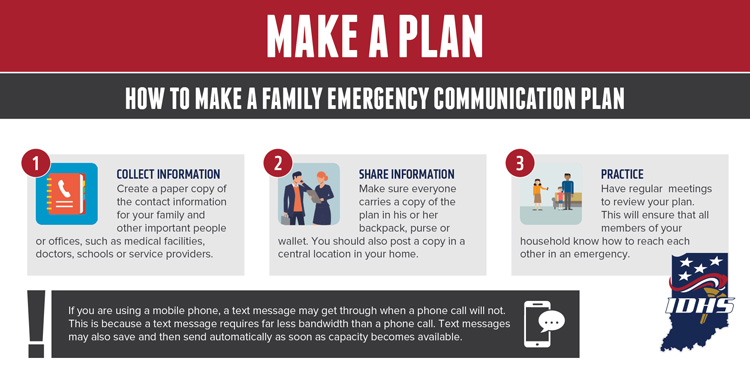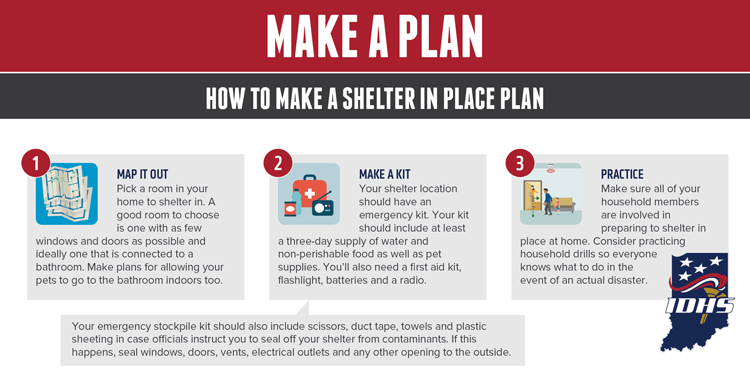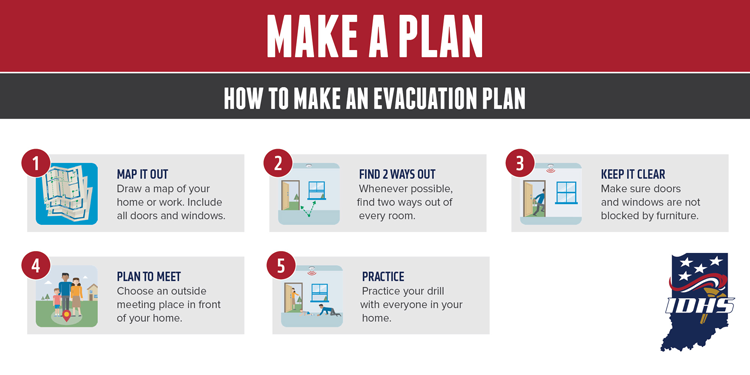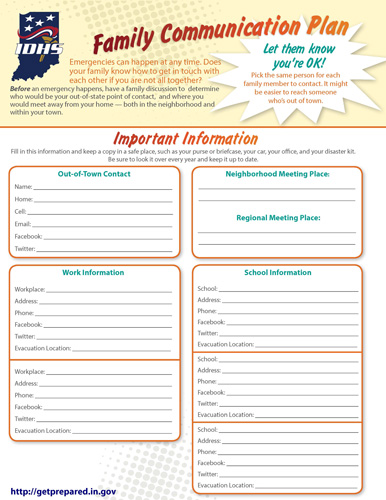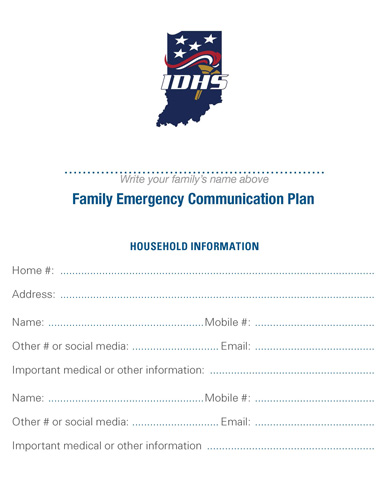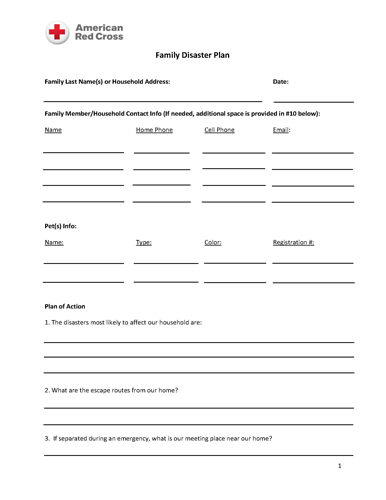Make a Plan
- Get Prepared
- Emergencies
- Current: Make a Plan
Preparation and communication are crucial during a disaster situation. Talk with friends, family and other community members about creating communication and safety plans for before, during and after all of Indiana’s disasters.
Disaster Planning Tips
Quick Tips
- Choose a location for household members to meet if separated during a disaster.
- Learn how to shelter in place and other types of sheltering methods.
- Develop a plan for when you must evacuate.
- Meet with your family and work on the plans together.
- Remember to plan for pets too.
Communication
Communicating during a disaster can be difficult, as communication channels can be limited or completely cut off depending on the situation. Having an established emergency communications plan will enable families to maintain contact with one another even if they become separated. Consider the following information when making a household emergency communications plan:
- Identify different ways to receive weather alerts.
- Understand how each disaster could impact forms of communication.
- Choose a location for household members to meet if separated during a disaster.
- Create a copy of emergency contact numbers for every household member.
Need some help getting started on an emergency communications plan? Use the downloadable forms below!
Shelter
Sheltering is important when disaster conditions require individuals to seek protection at home, work or in other locations. The three different types of sheltering include:
- Stay-at-Home
- Mass Care
- Sheltering in Place
Learn more about the different sheltering types at Ready.gov.
Evacuation
Sometimes a disaster might require evacuation from home or the community. In some situations, a day or two to prepare will be available, while other situations might call for an immediate evacuation. Regardless of the time frame, establishing a proper evacuation plan is important for keeping every member of the family safe.
For guidance on what to include in your evacuation plan, visit Ready.gov.
Steps to Make a Plan
Making a plan for you and your family is very important. It will keep all members of your family on the same page and allow everyone to be as safe as possible.
Step 1: Meet With Your Family
First, sit down with your family and discuss the possible events that could take place for which your family needs a disaster plan. Each possible disaster should be explained in detail along with discussion about actions that should be taken before and after any such event.
Step 2: Decide Your Meeting Location and list Contact Information
Now it's time to decide on an out-of-state contact and set a family meeting location. You need an out-of-state contact because during a disaster everyone within the same local area as you could be affected too. Your out-of-state contact should be out of the disaster zone. This contact may be a loved one, family member or a friend, as long as it is someone everyone can contact when separated to see if all members of the family are OK. Out-of-state calls might be easier to make if local circuits are overwhelmed and busy. Local phones and cell phones may not be working, so be patient.
During a disaster, there should be a mutual meeting location for your family members if they are separated. This meeting location should be different for each type of disaster. For example, for a natural disaster such as an earthquake, you might meet at the house. However, during a man-made disaster such as a nuclear incident, your meeting location might be out of state. It is also useful to call each other as soon as possible to ensure safety and make sure everyone is on the same page. Discuss each disaster with your family and come up with meeting locations.
Step 3: Plan What To Do With Your Pets
Pets are very special to owners. In a disaster they need to be taken care of as well. If you evacuate, take your pet(s) with you because you may not be able to return. If it's not safe for you to be there, then it's not safe for them to be either. Also, most shelters do not allow pets, so plan accordingly. For more information, visit the Pet Preparedness page.
Step 4: Describe Your Evacuation Route
Come up with an escape route and make sure everyone has knowledge of the surrounding roads and highways. Have a backup plan if the main route is cut off. Plan to relocate to an area that is out of the danger zone. Keep a detailed map of the area in your car at all times. Also, keep one in your house in case you have to travel on foot.

